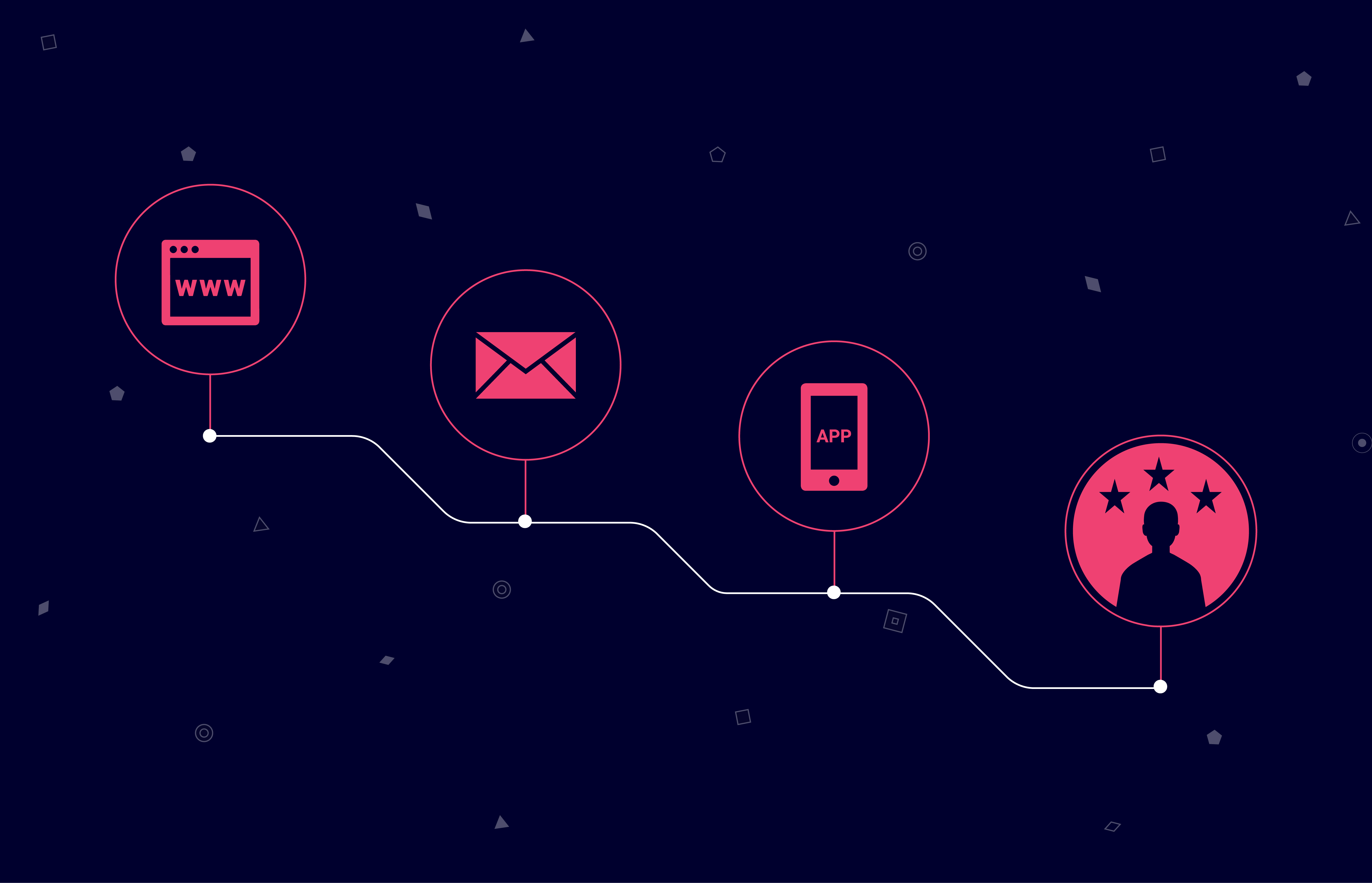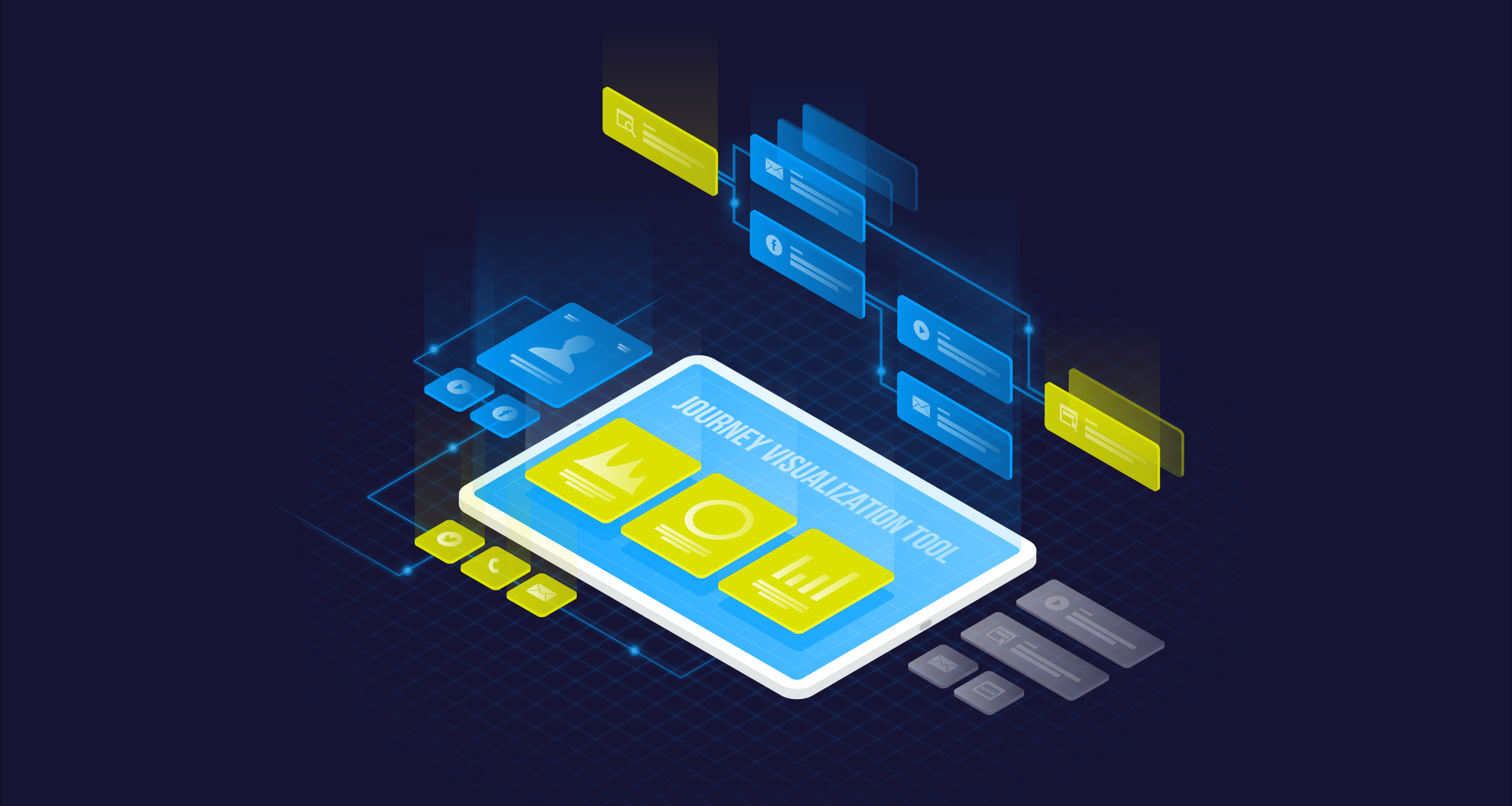EBOOK

TABLE OF CONTENTS
- Why connecting online and offline channels matters
- Cross-channel marketing trends
- Bridging physical and digital worlds
- Essential channels to integrate
- A seamless customer journey in financial services
- An omnichannel journey in the travel industry
- A journey to increase retention in telecoms
- Connect your touchpoints, connect with your customer
Why connecting online and offline channels matters
Orchestrating the customer journey... what does that mean to you? To your company? How about to your customer?
Chances are, you'll get a different answer for every person you ask. For a marketer, it might mean creating the ultimate customer journey — one that's 100% data-driven and sure to succeed every single time. To your company, it might be more simple: get the sale and make sure the person is satisfied.
To one customer it might mean getting through the process as quickly and painlessly as possible. For another, it might mean getting the best deal, or getting the most luxurious package, or getting the best service.
The point is that for every person, the Perfect Customer Journey is different. And for you, that means you cannot create one perfect ultimate journey and be done with it. Instead, you must be there when and where they need you. Whether it's in-store, online, or via your call center.
The numbers don't lie...
• Online sales are growing steadily, with 67% of millennials and 56% of GenXers preferring to shop online versus in a brick-and-mortar store. However, there are still a significant number of consumers across generations who prefer an in-store experience (Kinsta).
• Over 35% of customers expect to be able to contact the same customer service rep on any channel (Zendesk).
• Yet 61% of customers have not been able to easily switch from one channel to another when interacting with customer service (Aspect).
• Companies with extremely strong omnichannel customer engagement see a 9.5% year-over-year increase in annual revenue, compared to 3.4% for weak omnichannel companies (Aberdeen Group).
Cross-channel marketing trends
Devices are multiplying
There were around 15.4 billion connected devices in 2015. and IHS predicts this number will reach 30.7 billion in 2020, and 75.4 billion by 2025. The exponential growth of personal devices and our growing dependence on them to fulfill daily tasks affords advertisers both the opportunity — and the responsibility — to target customers in a new way that reflects the changing digital landscape.
Digital ad spend is increasing
Global digital ad spend is expected to reach more than $335 billion by 2020, according to Statista. To put that into perspective, it was only $59.82 billion in 2015.
The ability to track customer activity across digital platforms and environments has improved enormously. Despite these advancements, however, in-store, cross-device, and call center interactions remain disparate. This begs the question: When you’re unable to differentiate between a prospect and a customer beyond display, how can you deliver relevant content via the customer's preferred channel? How can you have a relevant conversation with them in-store? Interactions without context waste opportunities — and marketing budget.
Customers are checking competitors and checking out
Consumers have never been better equipped to actively share, compare and switch products and services, which makes gaining and keeping customer loyalty a complex game with ever-changing rules that need to be reviewed and recalibrated constantly.
Winning brands know how to serve a connected world of customers on an individual basis across a complex marketing ecosystem that continues to grow exponentially. This means not only pushing relevant ads, but delivering surprising service offers based on location and intent — across devices, in-store, or at 30,000 feet.
Bridging physical and digital worlds
When the customer journey is subject to so many different moments of influence across such a wide variety of physical and digital channels, how can marketers create a truly unified view of the customer? And how can it be applied to different business contexts?
In the next pages, you'll find three examples of real cross-channel customer journeys made possible by unifying, connecting and activating data across every channel and system with Intelligent Journey Orchestration.
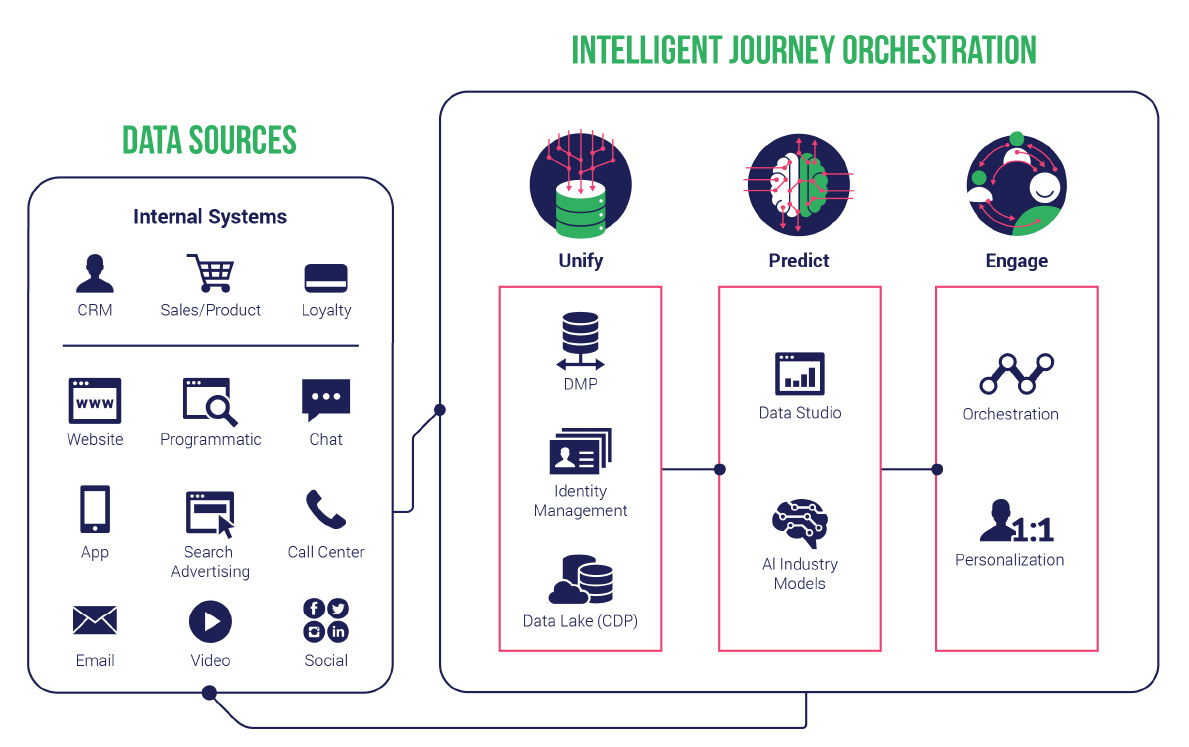
What is Intelligent Journey Orchestration?
Intelligent Journey Orchestration (IJO) is the data-driven marketing strategy that mirrors customer behavior across all channels to deliver true one-to-one personalization in real-time throughout the entire customer journey.
The Relay42 platform works on several levels to automate this kind of personalization at scale. By activating customer insights in real-time, it lets businesses generate individually personalized customer journeys across online and offline channels. It recognizes and remembers individuals across a lifetime of interactions, and it allows businesses to apply industry-specific AI models to optimize unique journeys for individuals rather than segments.
With Relay42, customers get highly relevant, personalized messaging when it matters most: in the moment. As a result, businesses are easily able to deliver individual journeys that increase conversion, loyalty, retention, and growth.
Essential channels to integrate
Offer truly personalized omnichannel journeys based on real-time decisions.
![]() Website
Website
Test and implement learnings from other connected channels creatively and dynamically. When in dialogue with offline CRM data, a trigger can instantly adapt homepage visuals to fit the products a customer interacts with via email.
![]() Call center / personalized IVR
Call center / personalized IVR
Once online behavior is synced with IVR (Interactive Voice Response), the frequent customer pattern of looking up an FAQ on the website could be harnessed, using this specific query to dynamically update the tree of questions through voice message. Questions can be addressed more effectively, and customer complaints concerning time wasting and annoyance taper out.
![]() PoS (Point of Sale)
PoS (Point of Sale)
Capturing email addresses in-store is a great way to supercharge brand-to-consumer conversations. It allows you to follow up with location-based offers and invitations, and push special in-app updates for loyalty cardholders. It also puts you in the perfect position to upsell relevant products online and
maximize on the interchangeable culture of showrooming and web-rooming.
 Messenger
Messenger
Conversational commerce is a growing trend among marketers and consumers Integrating messenger with other online and offline can function as a service tool — one that can really reinforce the fact that you are pushing acts, not ads. Messenger is a great way to deliver anything from booking confirmations and receipts to service updates
 Metasearch and third-party platforms
Metasearch and third-party platforms
When combined with a smart platform, third-party data can be used to match customers across owned channels such as website and email. Partnering up with price comparison websites, for example, is a great way to find out when a customer is researching your product or service, so you can deliver the perfect competitive (and personalized) offer on your own channels.
![]() Beacons
Beacons
Beacons can seamlessly bridge the digital and real world. Examples include in-app offers to entice customers in-store, and OOH (Out of Home) screens displaying a visual reminder triggered by a missing item in a valued customer’s weekly online shop. You could even use beacons to send a
service update based on search history (e.g. pinned locations on a map) to let a customer know where the nearest store branch is or whether a product they're interested in is available in a store nearby.
Just to name a few...
![]()
Your business may have more, fewer, or different channels than what we've named here. . You may be more focused on offline touchpoints, or you may be almost fully digital. These are just a few of the most common (and most essential) channels the most businesses need to integrate.
Depending on the size of your organization, it may be quite an undertaking to generate a full list of all customer channels. We suggest starting with your marketing channels and fanning out from there to customer service, after-sales, and other customer-facing departments.
Once you know exactly what you have to work with, you can start coming up with a plan of action, or reach out to vendors that can help you.
A seamless customer journey in financial services
Digital disruption hasn't bypassed the financial services sector, and with new FinTech disruptors breaking through every day, established businesses are tasked with finding ways to offer their services online and retain customers.
Financial services organizations are adopting Intelligent Journey Orchestration to:
• Offer scalable, real-time 1:1 personalization across all channels
• Optimize media spend
• Integrate legacy systems and keep compliant with data protection regulations
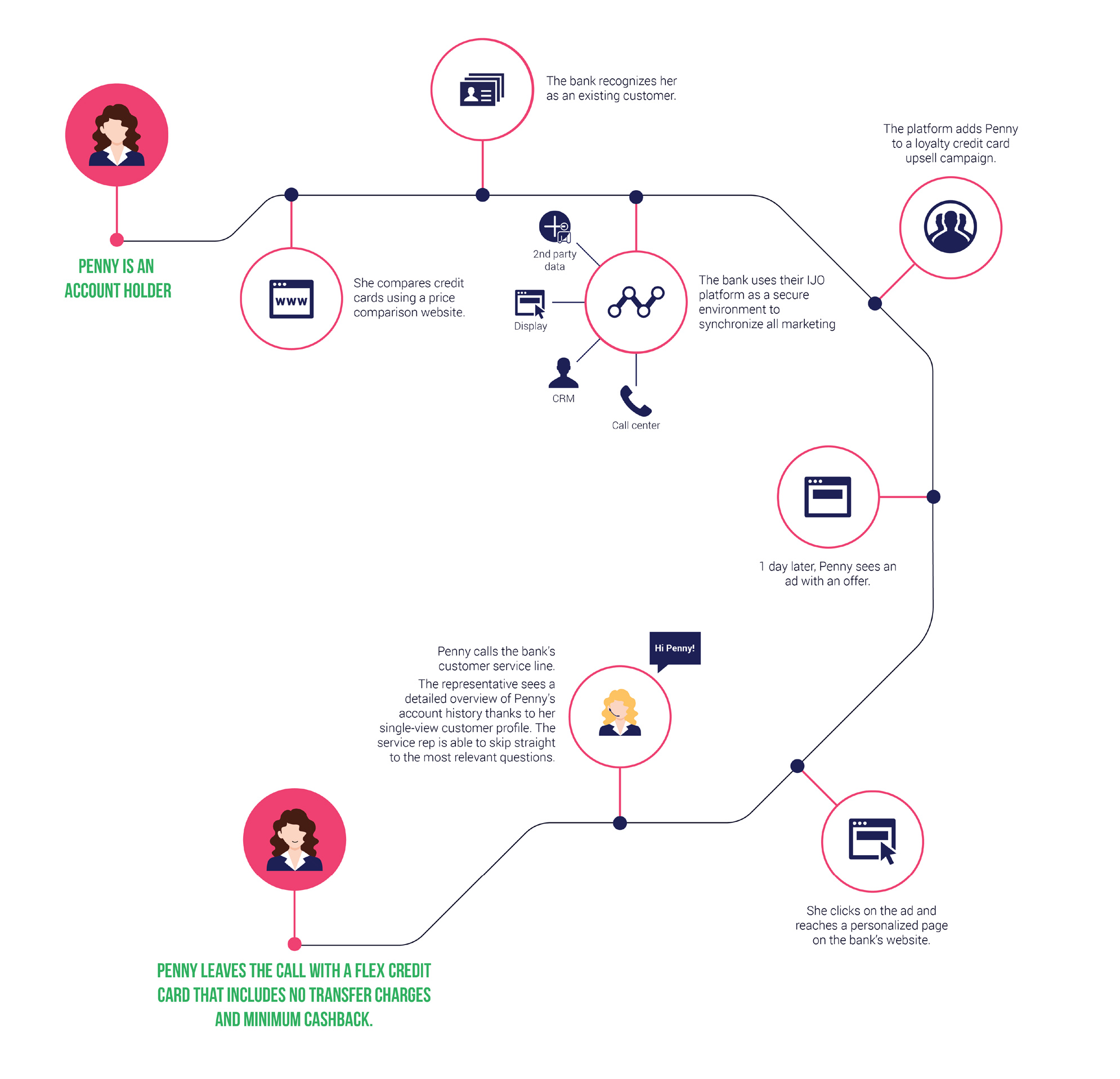
Read how marketers in the financial industry create exceptional customer experiences
An omnichannel journey in the travel industry
Digital transformation has turned the travel industry on its head. There have never been more travelers or more competition.
The travel sector is adopting Intelligent Journey Orchestration to:
• Develop smarter, more effective data-driven media buying models
• Scale personalization across all touchpoints
• Reduce media waste and maximize conversions
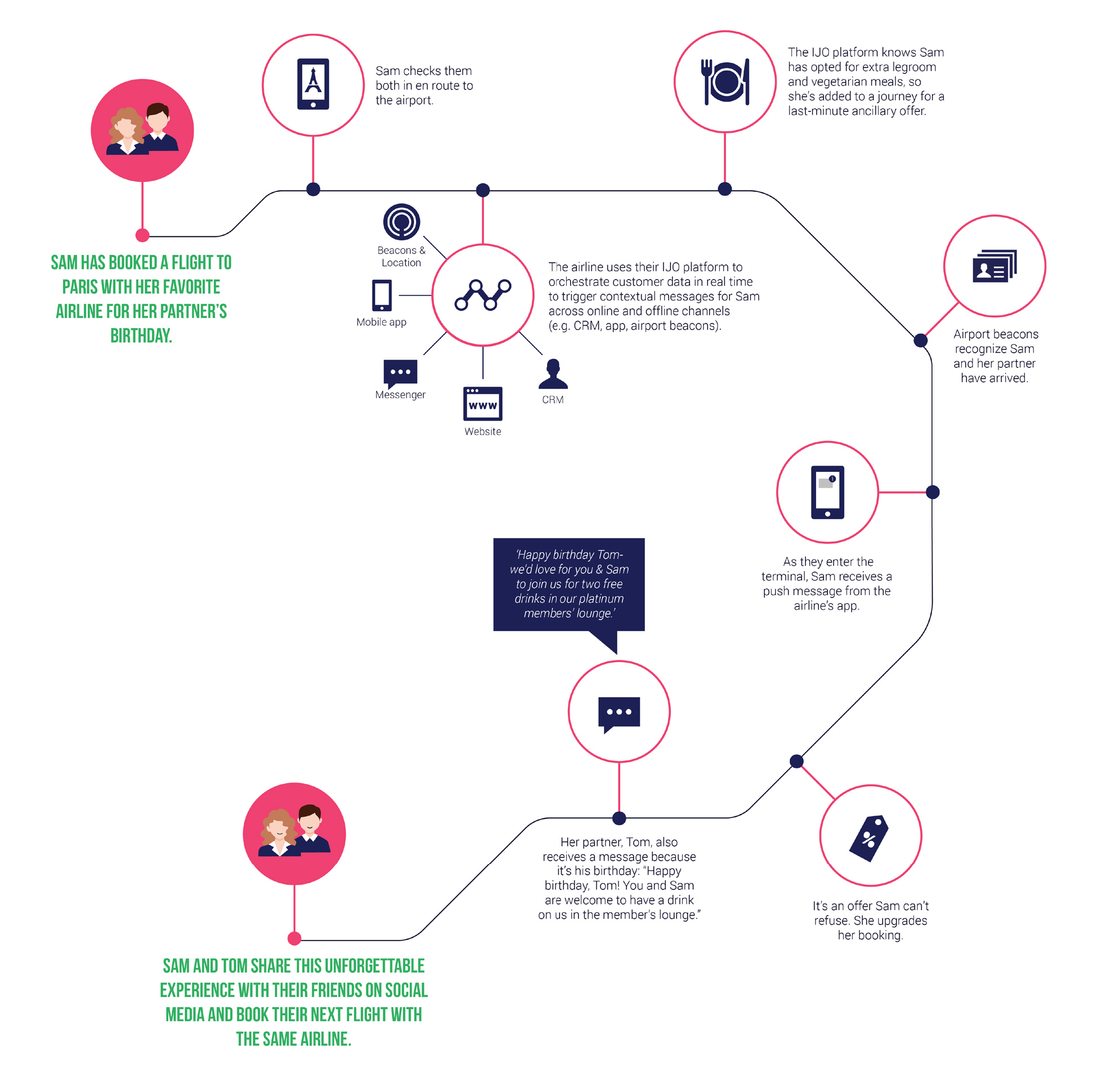
Read how global airlines are activating customer data to win the hearts of their travelers
A journey to increase retention in telecoms
The telecoms industry is an exciting and fiercely competitive one. With the constant threat of churn and steep price-based competition, it has never been more vital to catch customers at exactly the right time in their product lifecycle — and with the right message.
Telecoms businesses are adopting Intelligent Journey Orchestration to:
• Reduce complaints related to inconvenience and service waiting times
• Offer a hyper-personalized cross-channel customer experience
• Reduce churn and increase overall customer satisfaction
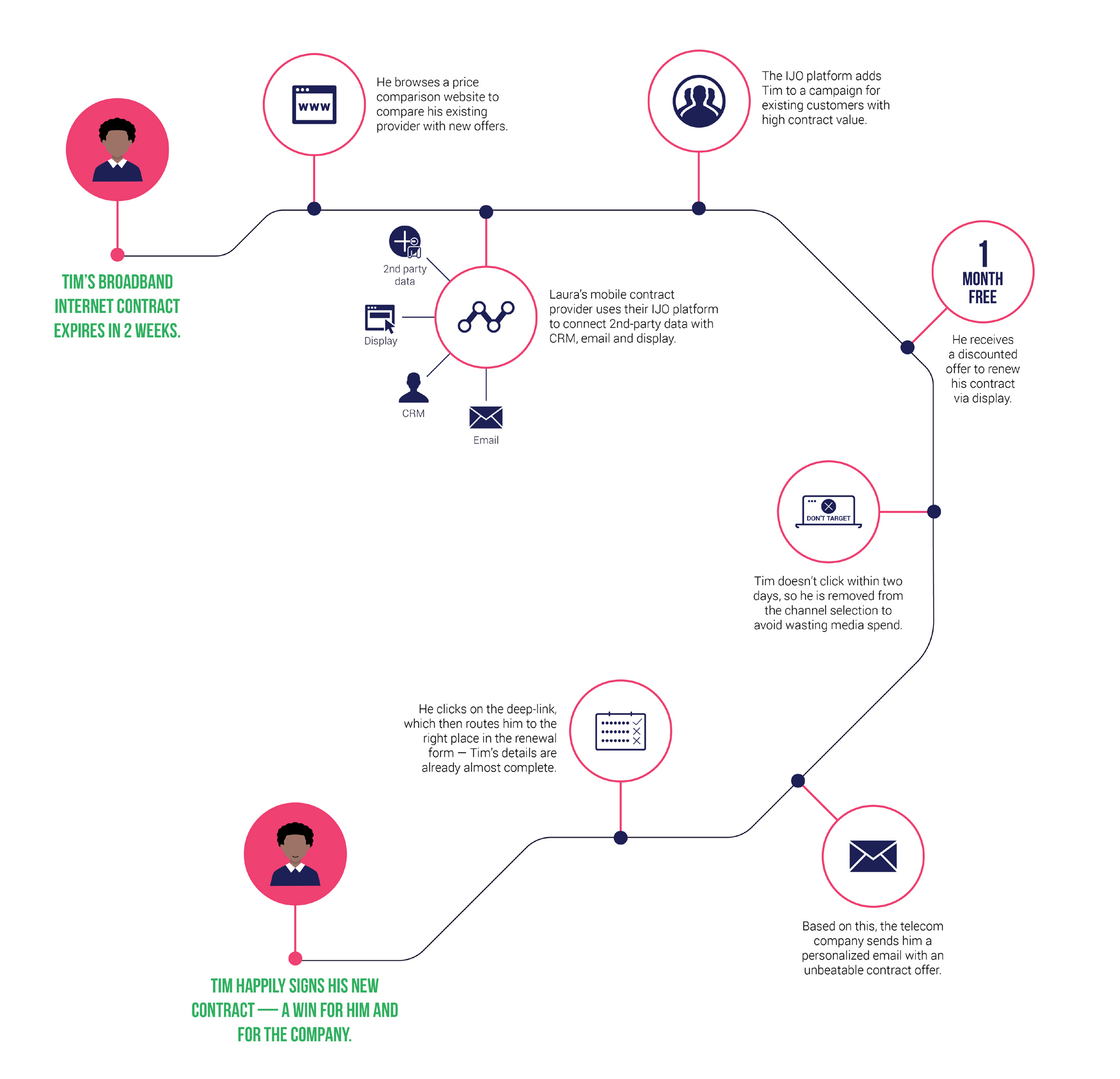
It’s time for pioneers in utilities and telco to stop competing on lowest price.
Explore how on the Utilities and Telco Insights Hub
Connect your touchpoints, connect with your customer
Offering a disparate customer journey is a surefire way to confuse customers and damage relationships. On the flip side, a truly integrated omnichannel journey supports customers and offers them an experience worth sharing —and worth repeating.
The good news is that many organizations, perhaps including yours, are already well on their way to creating engaging, interactive journeys that adapt to their customers' changing needs.
Connecting your online and offline channels is the key to connecting the many touchpoints of your customer journey — to connecting with your customers on an individual basis and being there for them whenever and wherever they need you.
The Relay42 platform orchestrates 1-to-1 omnichannel journeys like the ones in this ebook by unifying customer data from all online and offline channels and activating that data across touchpoints, based on the real-time decisions of your customers.
SEE THE RELAY42 PLATFORM IN ACTION
Request a demo and understand how our platform can help you to start delivering orchestrated, end-to-end customer journeys and get to true 1:1 personalization at scale.
Book a demo

